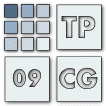Keynotes
"Geometric Computing"
Prof.
Ralph Martin will review a wide range of recent
research pr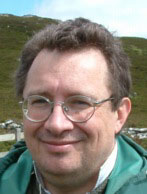 ojects
he has been involved in, both within the Geometric Computing and
Computer Vision research group at Cardiff University, and with other
collaborators. Various topics will be covered including surface mesh
denoising, surface mesh segmentation, shape deformation for animation,
generating surface mosaics, design intent detection, low discrepancy
point sampling, generating smooth parting lines for molds, reverse
engineering of reliefs, texture transfer, sketch input of solids,
assessing visual differences in meshes, and video completion.
ojects
he has been involved in, both within the Geometric Computing and
Computer Vision research group at Cardiff University, and with other
collaborators. Various topics will be covered including surface mesh
denoising, surface mesh segmentation, shape deformation for animation,
generating surface mosaics, design intent detection, low discrepancy
point sampling, generating smooth parting lines for molds, reverse
engineering of reliefs, texture transfer, sketch input of solids,
assessing visual differences in meshes, and video completion.
Biography Ralph Martin
has been working in the field of geometric computing since 1979. He
obtai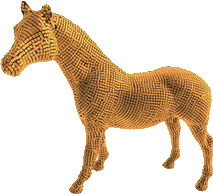 ned
his PhD in 1983 from Cambridge University for a dissertation on
"Principal Patches". Since then has progressed from Lecturer to
Professor at Cardiff University,
taking this last post in 2000. He is also a Guest Professor at Tsinghua
and Shandong Universities in China, and the Deputy Director of
Scientific Programmes of the Welsh Institute of Visual Computing. His
publications include almost 200 papers and 10 books covering such topics
as solid modelling, surface modelling, reverse engineering, intelligent
sketch input, mesh processing, video processing, computer graphics,
vision based geometric inspection, and geometric reasoning. He is a
Fellow of the Institute of Mathematics and its Applications, and a
Member of the British Computer Society. He is on the editorial boards of
"Computer Aided Design", "Computer Aided Geometric Design", the
"International Journal of Shape Modelling", "CAD and Applications", and
the "International Journal of CADCAM".
ned
his PhD in 1983 from Cambridge University for a dissertation on
"Principal Patches". Since then has progressed from Lecturer to
Professor at Cardiff University,
taking this last post in 2000. He is also a Guest Professor at Tsinghua
and Shandong Universities in China, and the Deputy Director of
Scientific Programmes of the Welsh Institute of Visual Computing. His
publications include almost 200 papers and 10 books covering such topics
as solid modelling, surface modelling, reverse engineering, intelligent
sketch input, mesh processing, video processing, computer graphics,
vision based geometric inspection, and geometric reasoning. He is a
Fellow of the Institute of Mathematics and its Applications, and a
Member of the British Computer Society. He is on the editorial boards of
"Computer Aided Design", "Computer Aided Geometric Design", the
"International Journal of Shape Modelling", "CAD and Applications", and
the "International Journal of CADCAM".
"Video-based 3D content production"
Over the past decade video-based reconstruction and rendering
techniques have received increasing interest for realistic content
production in games, broadcast and film. Image-based approaches to shape
cap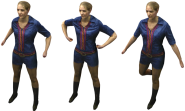 ture and rendering using texture maps are now standard in commercial
platforms. This talk will focus on advances in realistic content
production for dynamic scenes from multiple view video and the
challenges to exploiting captured 3D video in production. Advances in
multiple camera studio capture and reconstruction have resulted in
methods for highly realistic rendering of actor performance. Challenges
in integrating captured representations into a conventional games or
film production pipeline will be reviewed, together with new
approaches using surface motion graphs for video-based animation from
captured 3D video sequences. Recent research will be presented
transferring multiple view reconstruction to outdoor scenes to enable
free-viewpoint video in sports broadcast production and on-set
production in film will be presented. The talk will review the
state-of-the-art and identify open research problems which need to be
resolved to realise the wide-spread application of 3D video in
production.
ture and rendering using texture maps are now standard in commercial
platforms. This talk will focus on advances in realistic content
production for dynamic scenes from multiple view video and the
challenges to exploiting captured 3D video in production. Advances in
multiple camera studio capture and reconstruction have resulted in
methods for highly realistic rendering of actor performance. Challenges
in integrating captured representations into a conventional games or
film production pipeline will be reviewed, together with new
approaches using surface motion graphs for video-based animation from
captured 3D video sequences. Recent research will be presented
transferring multiple view reconstruction to outdoor scenes to enable
free-viewpoint video in sports broadcast production and on-set
production in film will be presented. The talk will review the
state-of-the-art and identify open research problems which need to be
resolved to realise the wide-spread application of 3D video in
production.
![]()
Biography. Adrian Hilton is Professor of Computer Vision and Graphics at the University of Surrey, UK. His research interest is robust computer vision for modelling and understanding real world scenes to bridge-the-gap between real and computer generated imagery. Over the past decade he has published over one hundred articles in the fields of computer vision, graphics and animation. Scientific contributions have been recognised by two journal and one conference best paper awards. Research has been commercially exploited leading to the first commercial hand-held 3D scanner and the first system for capturing animated models of people have been recognised through two EU IST Awards for Innovation, a DTI Manufacturing Industry Achievement Award and a Computer Graphics World Innovation Award. He heads the Visual Media Research Group leading collaborations with the broadcast and film industries to exploit computer vision technologies for use in production. He received an Advanced Research Fellowship in 1997 and a Royal Society Industry Fellowship in 2008 to support collaboration with industry. He currently serves as an area editor for the journal Computer Vision and Image Understanding, is a member of EPSRC ICT Strategic Advisory Team and was a co-founder of the annual industry-academic Conference on Visual Media Production in 2003. He is a Chartered Engineer and member of IET, IEEE and ACM.
"Visualization in Flatland"
A large number of challenging problems in visualization involve three
or higher dimensional data, while the majority of visualization results
have been, and will continue to be, shown on two dimensional computer
displays and paper media. "Flatland: A Romance of Many Dimensions",
written by a headm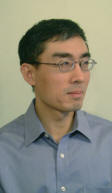 aster
and Shakespearean scholar in 1884, enlightened us about the fundamental
difficulty and hindrance in visualizing such data. The speaker will draw
from his experience in areas of visualization (including volume
graphics and video visualization), and discuss challenges in
visualization from the perspective of "Flatland", highlighting the
essence of dimension reduction in several visualization techniques. To a
large extent, such challenges also signify the divergence of
visualization from traditional computer graphics applications. The
speaker will present a collective view about data, information and
knowledge in visualization, as well as his answers to the following
aster
and Shakespearean scholar in 1884, enlightened us about the fundamental
difficulty and hindrance in visualizing such data. The speaker will draw
from his experience in areas of visualization (including volume
graphics and video visualization), and discuss challenges in
visualization from the perspective of "Flatland", highlighting the
essence of dimension reduction in several visualization techniques. To a
large extent, such challenges also signify the divergence of
visualization from traditional computer graphics applications. The
speaker will present a collective view about data, information and
knowledge in visualization, as well as his answers to the following
questions: when does graphics become visualization, and what would be a
visualization problem (or concept or system) that is not a graphics one?
Biography. Min Chen received his BSc degree in computer science from Fudan University in 1982 and his PhD degree from the University of Wales in 1991. He is currently a professor in the Department of Computer Science, Swansea University. In 1990, he took up a lectureship in Swansea. He became a senior lecturer in 1998 and was awarded a personal chair (professorship) in 2001. His main research interests include visualization, computer graphics, and interactive computing. Since 1992, he has led the Visual and Interactive Computing group at Swansea (currently consisting of 6 faculty members), and under his supervision, 20 PhD and 3 MPhil students have successfully completed their research programs. He has also led the Centre of Excellence for Computing and Software Technologies since 2002, and is the co-director of the recently-established Welsh Assembly Government Institute for Visual Computing. He was the paper co-chair of IEEE Visualization 2007 and 2008, and played a major role in establishing workshops on volume graphics and knowledge-assisted visualization. He is a fellow of the British Computer Society and a member of Eurographics, IEEE and ACM SIGGRAPH.
